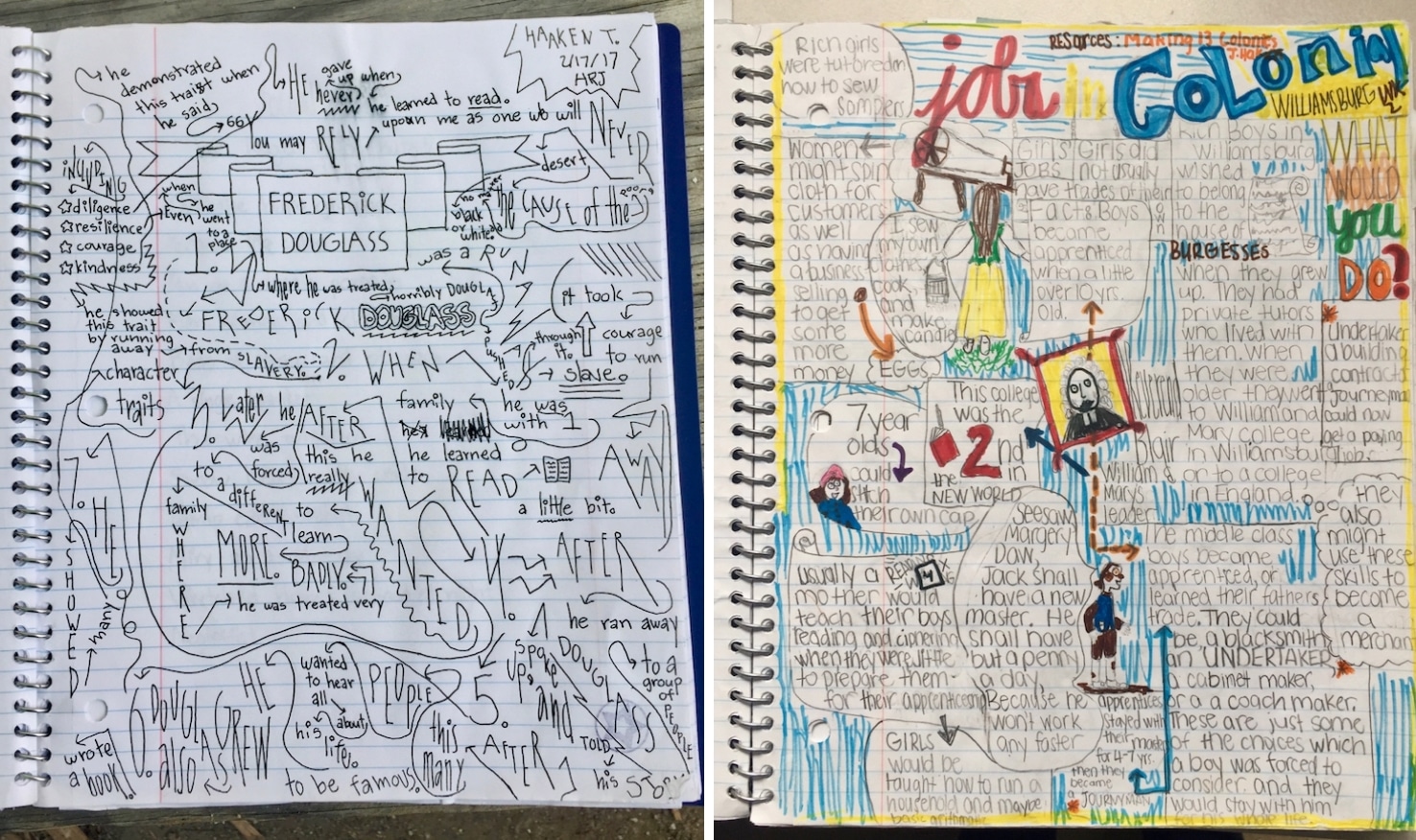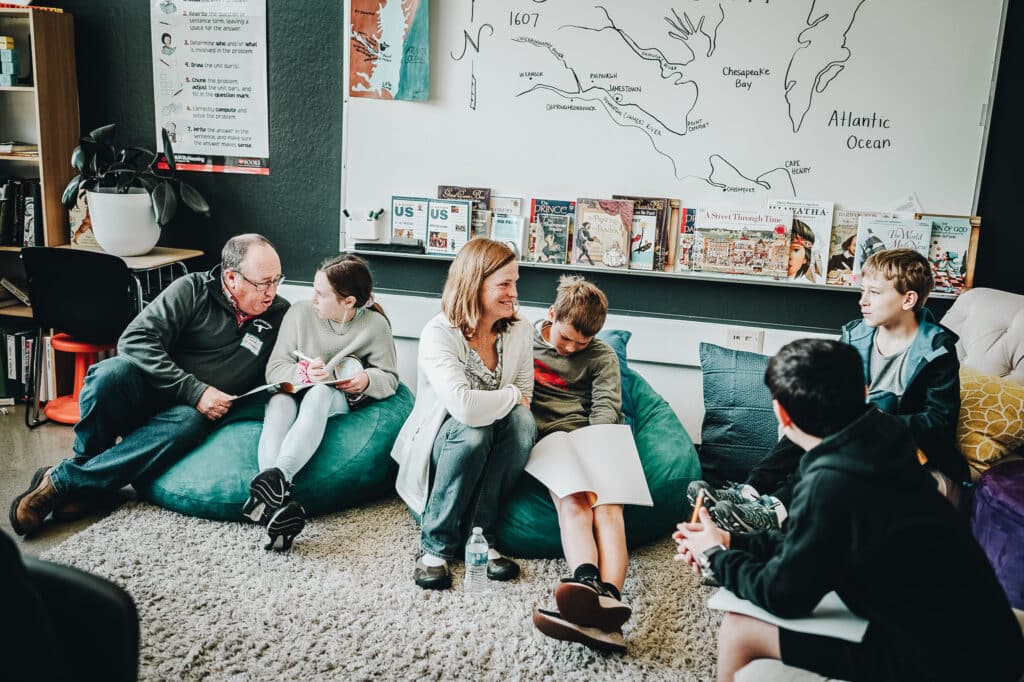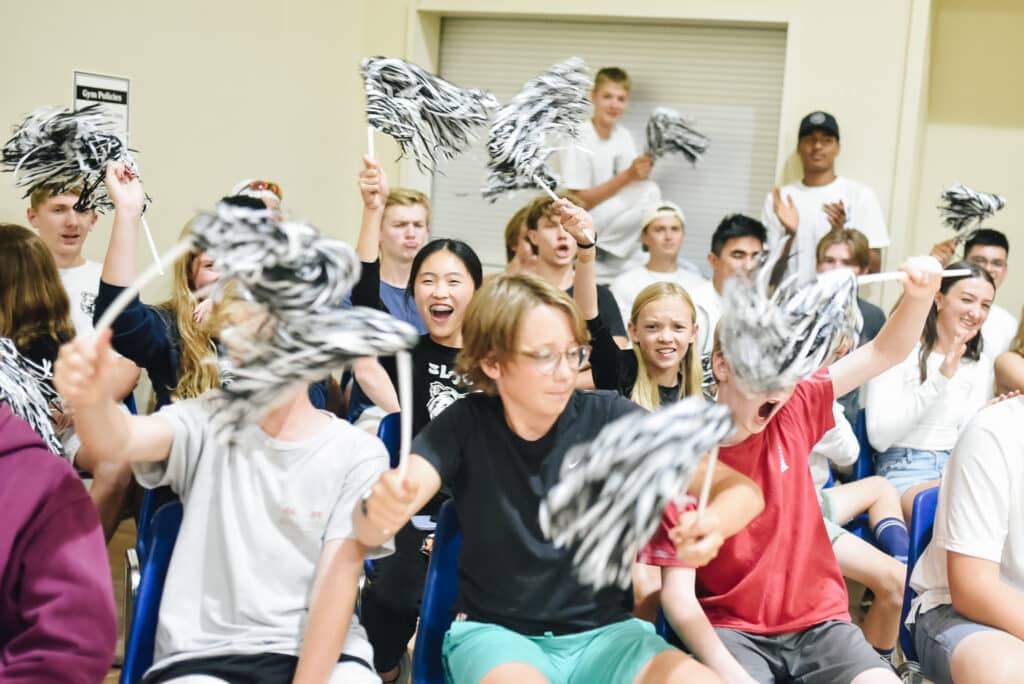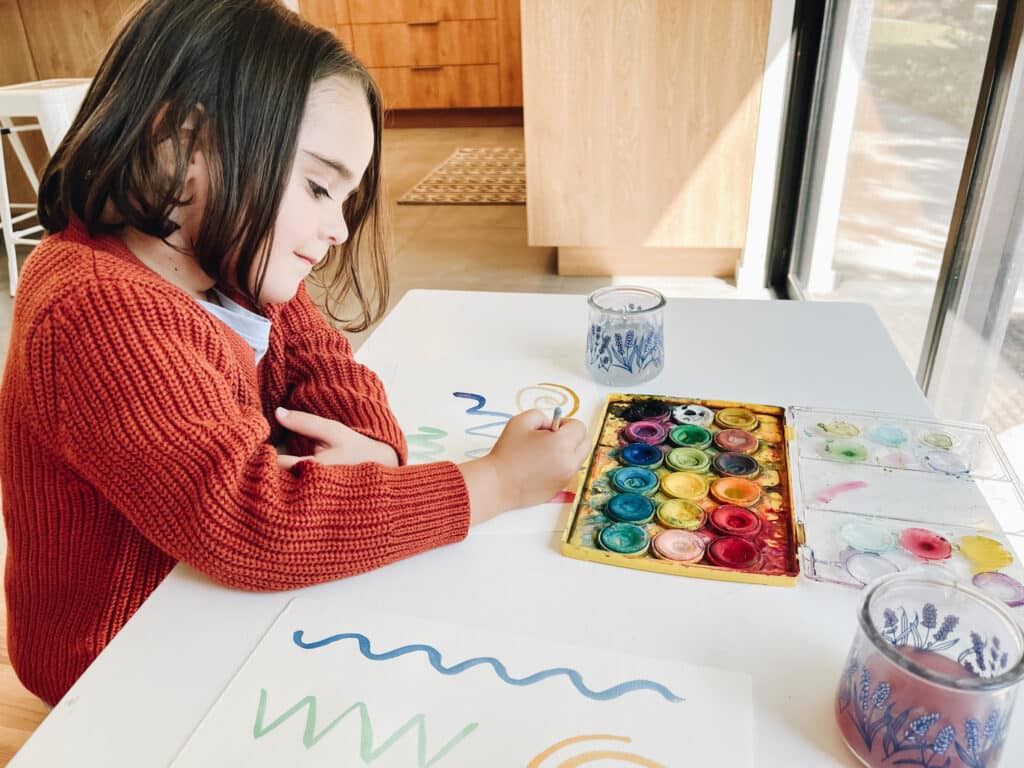
{photo by Thomas Martinsen}
As our kids grow into middle school, high school, and beyond, we know that note-taking will become an important tool they will use throughout their education and life. You may be wondering, “Should I be teaching my child how to take notes?” We are going to tackle that question today!
While formal note-taking isn’t required until high school and college, SLOCA parents can rest assured that note-taking in one form or another is happening in our middle school classrooms. Mr. Newman, our UMS History and Literature teacher, accompanies his class lectures with slides containing important information which the students are expected to know. He is instructing them to write down not ALL that they see, but what they don’t already know, what seems important, and anything he specifically tells them to include. He also assigns weekly Identification and Significance (ID/S ) questions on their history reading, in which students identify and discuss the significance of one or two events, people, inventions, etc., which gives students practice in summarizing the essential aspects of any given topic.
Jennifer Wright, one of our Lower Middle School core teachers, explains that students do take notes periodically in class, and the teachers will model bullet points of key concepts for the students to copy. Students also complete a “History Journal Reflection” each week, based on the assigned history reading. Sometimes a specific task is assigned from a variety of options (such as creating a Key Word Outline and writing a summary paragraph, or responding to specific questions), and other times students can choose which option to use to reflect on what they have learned. Each option involves the student in thinking about what is important from the reading and retelling it in some way.
After attending a Singapore conference and workshop on “Sketchnoting,” our teachers introduced this concept to the students at the beginning of the school year. Sketchnoting is a visual method of taking notes that has become popular at tech conferences, and can be easily adapted to classroom or homeschool settings. Some of our students love this option! You can see from the following photos (provided by a couple of SLOCA LMS students) that kids who enjoy drawing or doodling can really get into this method of note-taking:
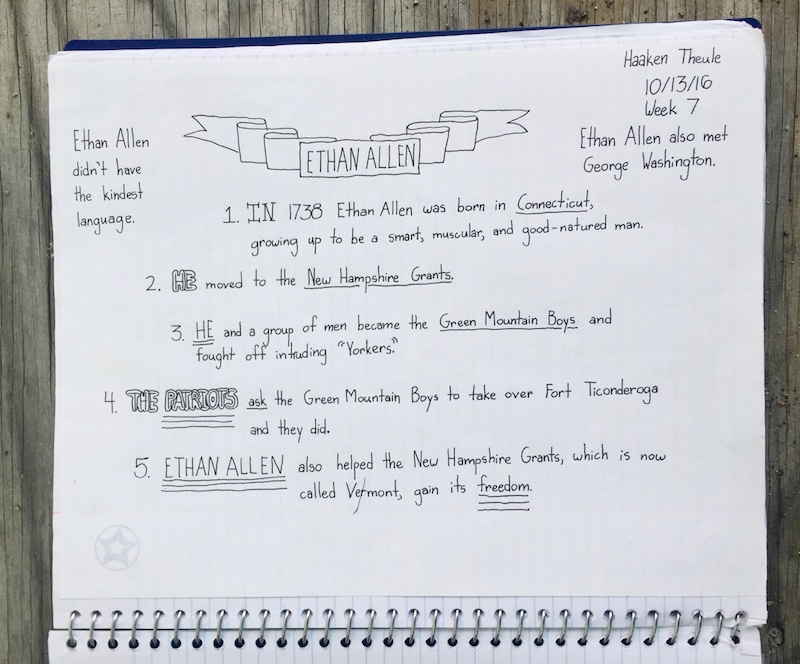
This technique can vary from simple to complex, and color can be added if desired.
Visual learners especially are more likely to remember important points when they are associated with an image or doodle, but it can be fun for all kinds of learners!
There’s even a book about this method (although we haven’t personally seen it) – The Sketchnote Handbook. (And we see the author also has a Sketchnote Workbook.) You can always find out more about sketchnoting, including more inspiring examples, by searching online. Here’s a list of sketchnoting resources.
But interacting with information at SLOCA is not limited simply to note-taking! Think about all the ways our kids are engaging in books and learning, in addition to the history-related assignments we’ve already mentioned:
- Upper Middle School students use character journals to learn how to relate to the protagonist.
- They are encouraged to write in their literature books, underlining passages and annotating them with their own comments and questions.
- They fill in Literature Logs with notes and quotes from the assigned books, to keep them engaged with the text.
- They also write Socratic tickets for each home day’s reading, which encourages them to be questioning while they read, and then allows for rich classroom discussion on the literature.
- Lower Middle School students complete a creative Home Reading Assignment each week based on the literature.
- They will sometimes write in class about elements of the story.
- Both Lower and Upper Middle school students write essays and formal critiques using the IEW method.
Speaking of IEW, keep in mind that our kids are learning solid IEW skills at SLOCA from a young age, and what’s just about the first thing they learn in IEW? Making a Key Word Outline (KWO). Kids who understand how to pull key words out of a paragraph or source of information are already set to take notes on the important points of whatever they are learning. The use of a KWO is an excellent way for students to get into the habit of taking and organizing notes based on their readings. So if you want to give your student extra practice taking notes on a home day, they could try the “key word” approach while you read history to them. Or give sketchnoting at home a try!
Our teachers use many techniques to keep learning interactive and to ensure that the students retain important information. While they may not be focusing on how to take notes the way we all learned in college, our students are connecting with their texts in meaningful ways, and learning valuable skills in identifying, thinking about, and discussing key concepts from what they are reading. They will be well-prepared for more formal note-taking in high school and beyond.
Parents, at home you can encourage this skill by reading the assigned literature and history with your child, and possibly prompting them to take notes while you read. Continue the practice of having them “retell” what they’ve heard (something they begin at the Primary level) for as long as you think they need to, making sure they are grasping the main ideas. Ask them questions to help lead them to important concepts to take note of, and discuss the books with them to help them formulate clear ideas and questions. Students, parents, and teachers – we are in this together!




